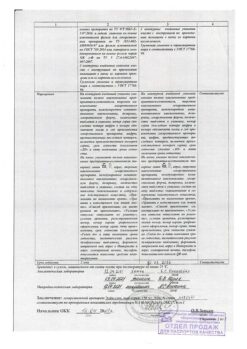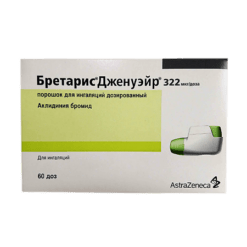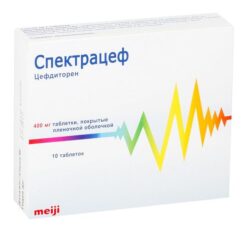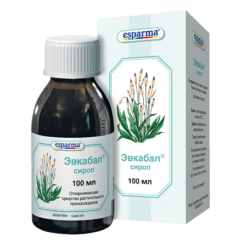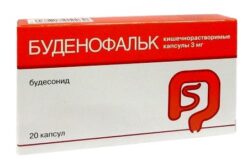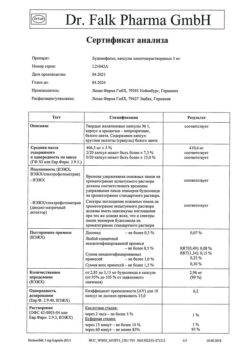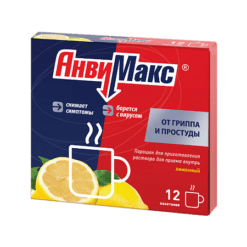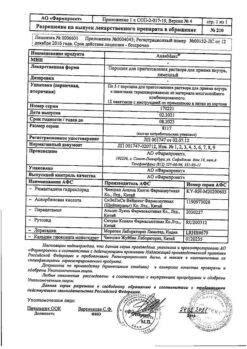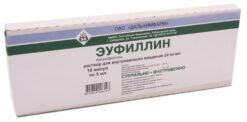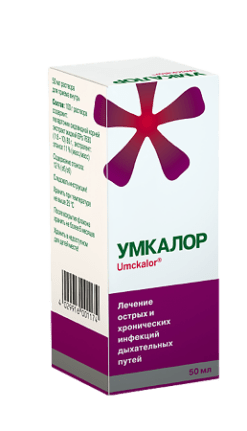No products in the cart.
Theopec, 100 mg 50 pcs.
€9.19 €8.04
Description
Theophylline refers to phosphodiesterase inhibitors. It increases accumulation of c-AMP in tissues, which reduces the contractile activity of smooth muscles.
Theophylline dilates bronchi, blood vessels (mainly brain, skin and kidney vessels). It reduces pulmonary vascular resistance, lowers the pressure in the small circle of the circulation. Increases renal blood flow. It has a moderately pronounced diuretic effect. Inhibits platelet aggregation.
It has a stimulating effect on the respiratory center, increases the frequency and strength of heart contractions. Delayed release of the active substance from the tablet ensures that the therapeutic level of theophylline in the blood reaches 3-5 hours after taking Theopec and lasts for 10-12 hours.
Twice administration of the drug allows obtaining effective concentrations of theophylline in blood within 24 hours. Because of the long-term action of the drug, one of the important indications for use is to prevent nocturnal and pre-morning bronchospasm phenomena.
Pharmacokinetics:
Theophylline is completely absorbed after oral administration (90% bioavailability). In the blood 40-60% bound to proteins. It penetrates through histohematic barriers.
It is bioreformed in liver with formation of inactive metabolites. It is excreted from the body mainly by the kidneys, partially with breast milk.
Indications
Indications
Bronchial asthma, status asthmaticus, obstructive bronchitis, emphysema, apnea in newborns (adjuvant).
Pharmacological effect
Pharmacological effect
Theophylline is a phosphodiesterase inhibitor. Increases the accumulation of c-AMP in tissues, which reduces the contractile activity of smooth muscles.
Theophylline dilates the bronchi and blood vessels (mainly the vessels of the brain, skin and kidneys). Reduces pulmonary vascular resistance, lowers pressure in the pulmonary circulation. Increases renal blood flow. Has a moderate diuretic effect. Inhibits platelet aggregation.
It has a stimulating effect on the respiratory center, increases the frequency and strength of heart contractions. The slow release of the active substance from the tablet ensures that the therapeutic level of theophylline in the blood is achieved 3-5 hours after taking Teopek and persists for 10-12 hours.
Taking the drug twice a day allows you to obtain effective concentrations of theophylline in the blood during the day. Due to the long-term effect of the drug, one of the important indications for use is the prevention of nighttime and pre-dawn bronchospasm.
Pharmacokinetics:
After oral administration, theophylline is completely absorbed (bioavailability 90%). In the blood it is 40-60% bound to proteins. Penetrates through histohematic barriers.
Biotransformed in the liver to form inactive metabolites. It is excreted from the body mainly by the kidneys, partly with breast milk.
Special instructions
Special instructions
With severe coronary insufficiency (angina pectoris, myocardial infarction in the acute period), ventricular extrasystole, total vascular atherosclerosis, obstructive hypertrophic cardiomyopathy, peptic ulcer of the digestive tract, chronic heart failure, severe pathology of the hepatic system, increased convulsive activity, prostate hypertrophy, gastroesophageal reflux, pregnancy, thyrotoxicosis, uncontrolled hypothyroidism (cumulation is recorded), the medication is used with caution.
In pediatric practice and elderly patients, Teopek can be prescribed for health reasons.
Rectal forms are used with caution in cases of diagnosed diseases of the direct intestine (and if they are suspected), and in case of diarrhea syndrome. In smoking patients, there is a decrease in the effectiveness of the medication.
Simultaneous therapy with other drugs whose active ingredients are xanthine derivatives is unacceptable. In elderly patients with severe concomitant pathology, with viral infectious lesions, with diseases of the hepatic and cardiovascular systems, correction of the treatment regimen is required.
Active ingredient
Active ingredient
Theophylline
Composition
Composition
Theophylline 100 mg.
Excipients:
composite polymer carrier (polymethacrylic acid and macrogol (polyethylene glycol) interpolymer complex),
calcium stearate.
Contraindications
Contraindications
Hypersensitivity, incl. to other xanthine derivatives (caffeine, pentoxifylline, theobromine), hemorrhagic stroke, retinal hemorrhage, acute myocardial infarction, severe atherosclerosis of the coronary arteries, recent history of bleeding, pregnancy, breastfeeding.
Side Effects
Side Effects
From the nervous system
Dizziness, headache, insomnia, agitation, anxiety, irritability, tremor.
From the cardiovascular system
Palpitations, tachycardia (including in the fetus when taken by a pregnant woman in the third trimester), arrhythmias, decreased blood pressure, cardialgia, increased frequency of angina attacks.
From the digestive system
Gastralgia, nausea, vomiting, gastroesophageal reflux, heartburn, exacerbation of peptic ulcer, diarrhea, with long-term use – loss of appetite.
Allergic reactions
Skin rash, itching, fever.
Others
Chest pain, tachypnea, flushing, albuminuria, hematuria, hypoglycemia, increased diuresis, increased sweating.
Side effects decrease with decreasing dosage of the drug.
Interaction
Interaction
Theophylline is not used in combination with other xanthine derivatives.
In combination with phenobarbital, diphenin, rifampicin, isoniazid, carbamazepine, sulfinpyrazone, phenytoin, a decrease in the effectiveness of theophylline is observed, which may require an increase in the doses of the drug used.
When used simultaneously with macrolide antibiotics, lincomycin, allopurinol, cimetidine, isoprenaline, beta-blockers, oral contraceptives, epoxacin and with influenza vaccination, the intensity of action may increase, which may require a reduction in the dose of theophylline.
Theophylline increases the likelihood of developing side effects of glucocorticosteroids, mineralocorticosteroids (hypernatremia), and drugs that excite the central nervous system (increases neurotoxicity).
The drug suppresses the therapeutic effects of lithium carbonate and beta-blockers.
Theophylline potentiates the effect of diuretics by increasing glomerular filtration and decreasing tubular reabsorption.
Theophylline should be prescribed with caution concomitantly with anticoagulants.
Antidiarrheal drugs and enterosorbents reduce the absorption of theophylline.
Overdose
Overdose
Symptoms: loss of appetite, gastralgia, diarrhea, nausea, vomiting (including blood), gastrointestinal bleeding, tachypnea, facial skin flushing, tachycardia, ventricular arrhythmias, insomnia, motor excitation, anxiety, photophobia, tremor, convulsions. In severe poisoning, epileptoid seizures, hypoxia, metabolic acidosis, hyperglycemia, hypokalemia, decreased blood pressure, confusion, and renal failure with myoglobinuria may develop.
Treatment: discontinuation of the drug, gastric lavage, administration of activated charcoal, laxatives, intestinal lavage with a combination of polyethylene glycol and electrolytes, forced diuresis, hemosorption, plasma sorption, hemodialysis (effectiveness is not high, peritoneal dialysis is not effective), symptomatic therapy (including metoclopramide and ondansetron – for vomiting). If convulsions occur, maintain airway patency and administer oxygen therapy. To stop a seizure – intravenous diazepam, 0.1-0.3 mg/kg (but not more than 10 mg). For severe nausea and vomiting, use metoclopramide or ondansetron (iv).
Storage conditions
Storage conditions
Store in a dry place, protected from light, at a temperature not exceeding 25°C.
Shelf life
Shelf life
5 years.
Manufacturer
Manufacturer
Alium JSC, Russia
Additional information
| Shelf life | 5 years. |
|---|---|
| Conditions of storage | Store in a dry, light-protected place at a temperature not exceeding 25 ° C. |
| Manufacturer | Alium JSC, Russia |
| Medication form | sustained release tablets |
| Brand | Alium JSC |
Related products
Buy Theopec, 100 mg 50 pcs. with delivery to USA, UK, Europe and over 120 other countries.



